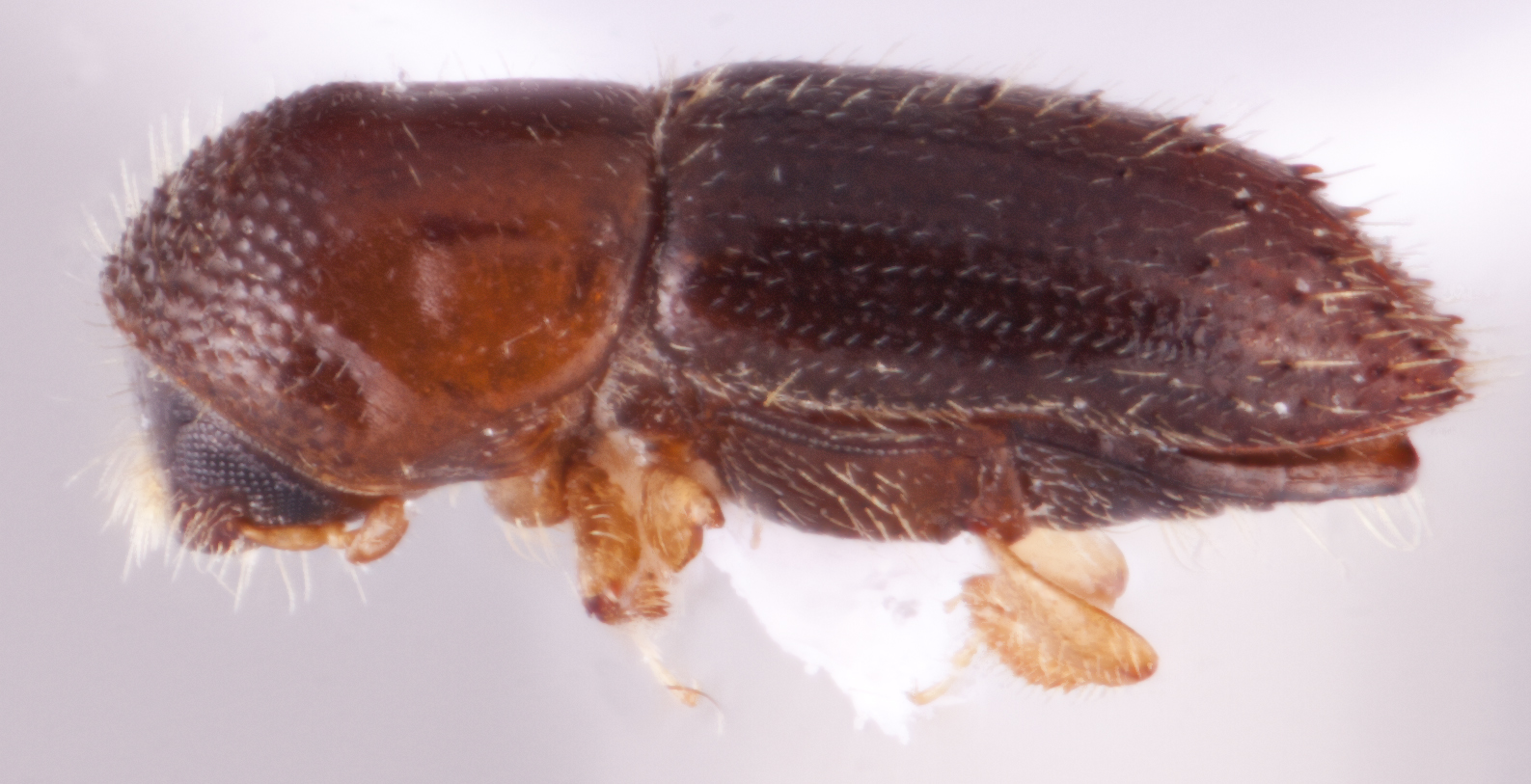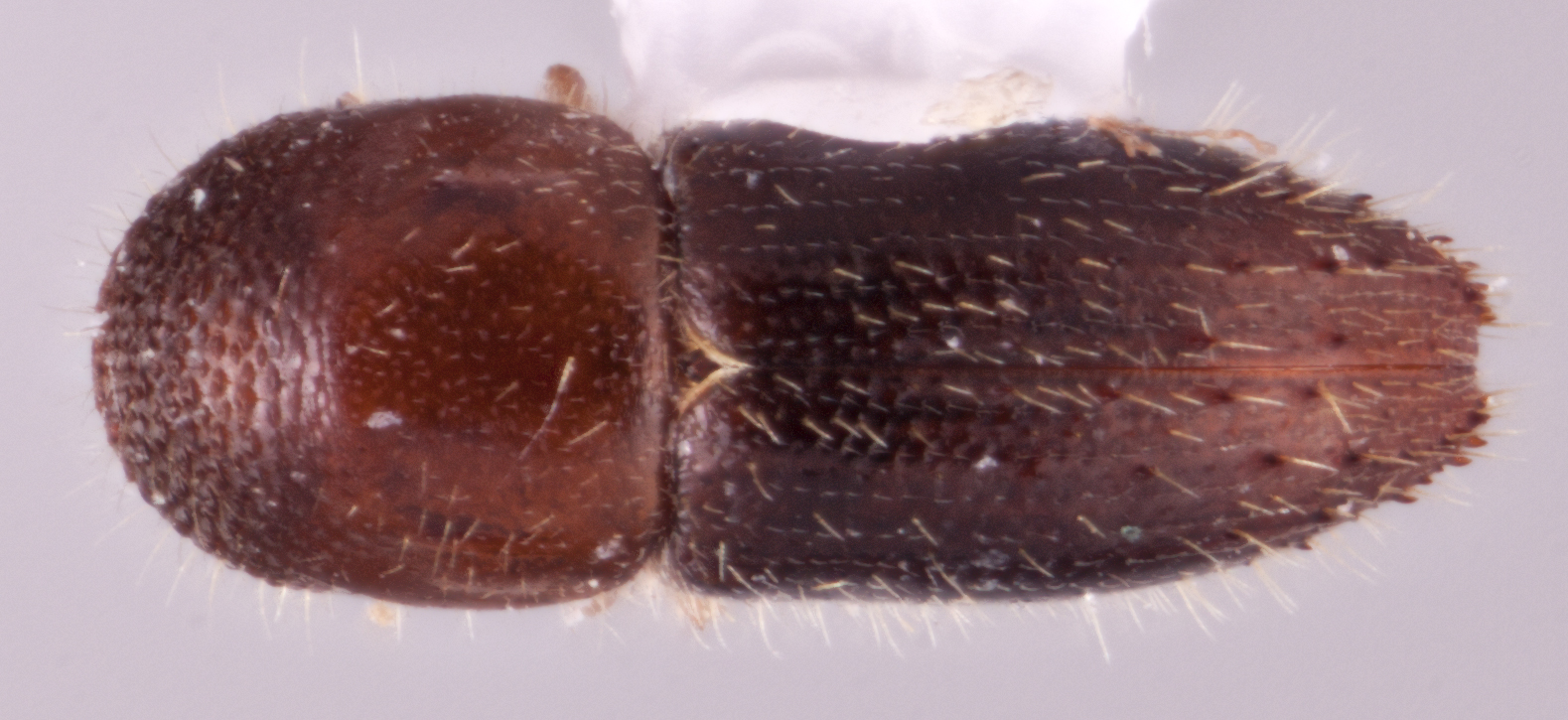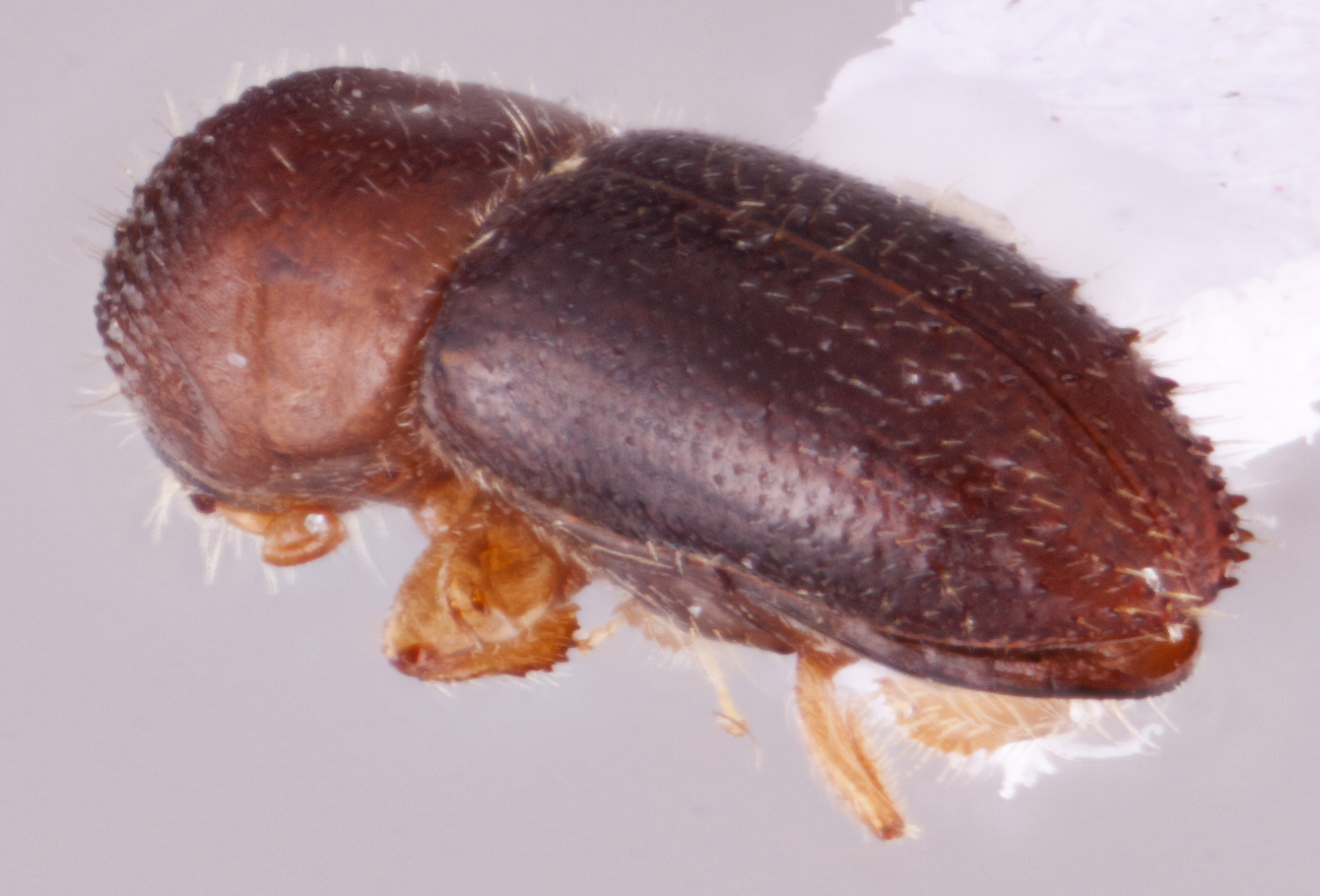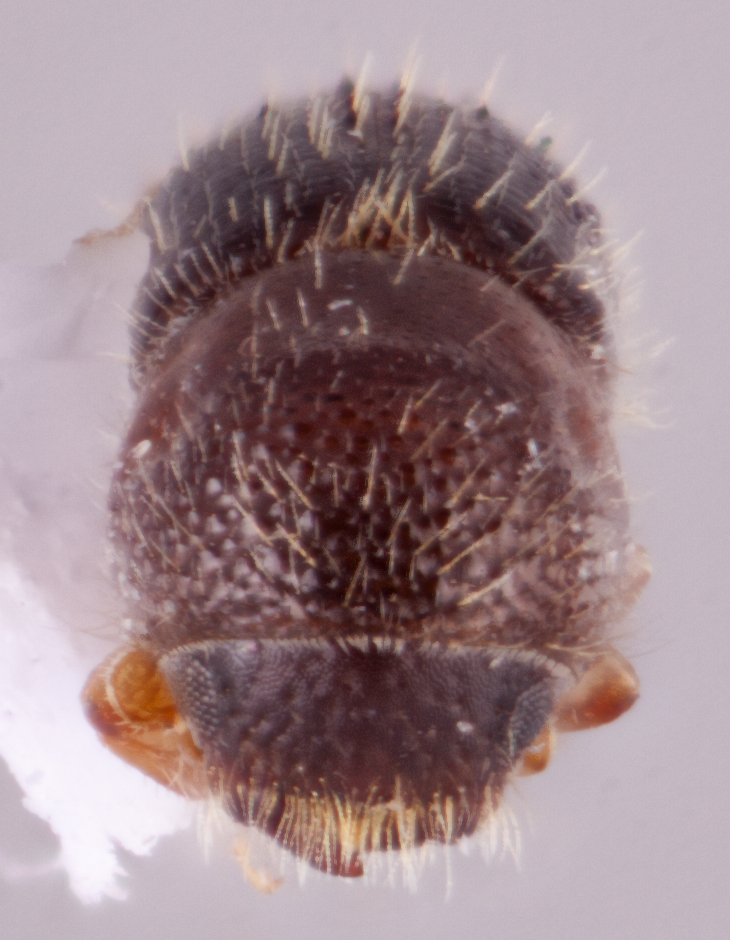Xyleborinus andrewesi
|
Xyleborinus andrewesi lateral; R.K. Osborn |
|
Xyleborinus andrewesi dorsal; R.K. Osborn |
|
Xyleborinus andrewesi declivity; R.K. Osborn |
|
Xyleborinus andrewesi frontal; R.K. Osborn |
Taxonomic history
Xyleborus andrewesi Blandford, 1896b: 227.
Xyleborinus andrewesi (Blandford): Wood, 1989: 176.
Synonyms
Xyleborus persphenos Schedl, 1970a: 219. Schedl, 1975e: 34.
Xyleborus insolitus Bright, 1972: 77. Bright, 1985: 173.
Cryptoxyleborus gracilior Browne, 1984a: 101. Beaver, 1995a: 198.
Diagnosis
1.9−2.0 mm long (mean = 1.92 mm; n = 5); 3.17−3.33 times as long as wide. This species is distinguished by the elytraelytron:
the two sclerotized forewings of beetles that protect and cover the flight wings
strongly attenuateattenuate:
gradually tapering apically
 and the elytralelytral:
and the elytralelytral:
pertaining to the elytra
apexapex:
point or edge furthest from the body; opposite of base
 acute.
acute.
May be confused with
Cryptoxyleborus spp. and Xyleborinus cuneatus
Distribution
Recorded in the study region from Bangladesh, China (Fujian, Yunnan), India (Andaman Is, Jharkhand, Karnataka, Kerala, Madhya Pradesh, Odisha, Tamil Nadu, Uttarakhand, West Bengal), Nepal, Taiwan, Thailand, Vietnam. It also occurs in Sri Lanka and through Malaysia and Indonesia, to the Philippines and New Guinea. Presumably imported to and established in East Africa (Tanzania, Zambia) and the Seychelles. Introduced and established in the USA (Okins and Thomas 2010Okins and Thomas 2010:
Okins KE, Thomas MC. 2010. New North American record for Xyleborinus andrewesi (Coleoptera: Curculionidae: Scolytinae). Florida Entomologist 93: 133-134. https://doi.org/10.1653/024.093.0122, Gomez et al. 2018aGomez et al. 2018a:
Gomez DF, Rabaglia RJ, Fairbanks KEO, Hulcr J. 2018a. North American Xyleborini north of Mexico: a review and key to genera and species (Coleoptera, Curculionidae, Scolytinae). ZooKeys 768: 19-68. https://doi.org/10.3897/zookeys.768.24697).
Host plants
polyphagous (Browne 1961bBrowne 1961b:
Browne FG. 1961b. The biology of Malayan Scolytidae and Platypodidae. Malayan Forest Records 22: 1-255., Schedl 1963aSchedl 1963a:
Schedl KE. 1963a. Scolytidae und Platypodidae Afrikas. Band II. Familie Scolytidae (Fortsetzung), Unterfamilie Ipinae (Fortsetzung). Revista de Entomologia de Moccedil;ambique 5: 1-594.)
Remarks
Kalshoven (1959b) gives some details of brood sizes at different stages of development of the brood chamber. The species attacks plantation trees, but the attacks are secondary on stressed or dying host trees and not primary on healthy trees (Maiti and Saha 2004Maiti and Saha 2004:
Maiti PK, Saha N. 2004. Fauna of India and the adjacent countries. Scolytidae: Coleoptera (bark and ambrosia beetles). Vol. 1. Part 1. Zoological Survey of India, Kolkata, 268 pp.).
DNA data
Sequences available for COI and CAD.
COI: MN620009; MN620010; MN620011; MN620012; MN620013; MN620014; MN620015; OP617769
CAD: MN620279; MN620280; MN620281; MN620282; MN620283; MN620284; OP607198





